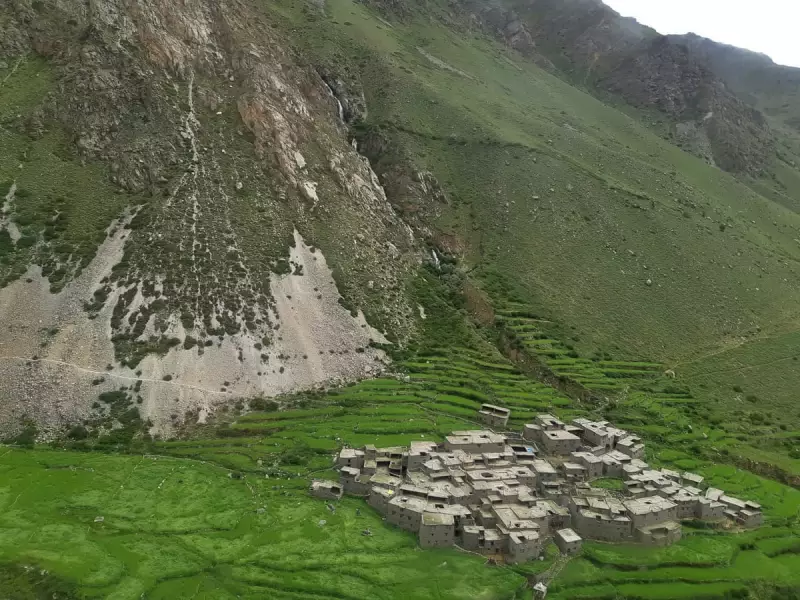
Ancient Himalayan Community Confronts Climate Exodus
For over a millennium, the remote Himalayan village of Til has endured, nestled high in Nepal's Limi valley near the Tibetan border. Now, this centuries-old settlement faces its greatest threat yet – not from geopolitical tensions or epidemics, but from the relentless advance of climate change that is forcing residents to consider abandoning their ancestral home.
The Night That Changed Everything
On 15 May this year, the usual mountain silence was shattered by an ominous rumbling. Pemba Thundup, 37, emerged barefoot from his house to witness a terrifying deluge of earth, water and rocks cascading down the mountainside toward Til's distinctive flat-roofed mud houses. The entire village of 21 families scrambled to safety, carrying elderly residents on their backs to a nearby field.
After two weeks sheltering in tents with no government assistance, families reluctantly returned to their damaged homes. However, they reached a unanimous decision that would have been unthinkable just years earlier: to permanently leave their ancient settlement by year's end.
A Rich Heritage Under Threat
Located roughly 100km south of Tibet's sacred Mount Kailash at an altitude of approximately 4,000 metres, the Limi valley hosts three villages – Til, Halji and Dzang – that have been continuously inhabited for at least 1,000 years. At its peak in the 2000s, nearly 180 households called this valley home.
Though within Nepal's borders, the valley remains culturally and geographically aligned with Tibet. Residents speak Tibetan and preserve some of the oldest surviving Tibetan Buddhist monasteries, dating to the 10th century.
Astrid Hovden, associate professor at the Arctic University of Norway and author of Limi, the Land In-Between, notes: "They have a tradition of being quite self-reliant, and that has to do with their particular history of being a community located at the border between Tibet and Nepal, where they didn't have any expectations of help."
Climate Warnings Fall on Deaf Ears
As Til residents fought for survival, Nepal's government was preparing for its inaugural climate conference, Sagarmatha Sambaad, in Kathmandu. Tashi Lhazom, a 25-year-old climate activist from neighbouring Halji, attended to highlight how mountain communities like hers were being overlooked in climate discussions.
When Lhazom's phone began flooding with images from the disaster, she discovered nobody at the conference had even heard about it. "For us to be taken seriously, the flood has to be huge or the entire village has to be carried away," Lhazom lamented.
Her persistence caught a geoscientist's attention, who suggested the flooding resulted from permafrost thaw creating meltwater pools that suddenly drain, causing catastrophic flooding.
Infrastructure Collapse Accelerates Departure
The community's isolation has worsened with repeated infrastructure failures. A four-metre-wide bridge connecting Til to the outside world was destroyed years ago in an earlier flash flood. The replacement bridge, constructed upstream, was swept away in July during a second major flood this year.
Thanks to GoFundMe donations organised by the Limi Youth Society, a third bridge was completed in November, but residents remain fearful. "It may not be this year, but it could be the next or the year after, when our village might get swept away," warns Thundup.
Climate disasters are accelerating an existing population decline as young people seek opportunities elsewhere. The closure of Zang Philgye Ling monastery in Dzang in 2024, due to dwindling monks, further emptied the valley.
Fighting to Preserve Culture Amid Uncertainty
The Limi community has petitioned the Nepalese government for infrastructure reconstruction, resettlement land and funds, valley assessments, and drainage of problematic glacial lakes. They report receiving no response.
Kunchok Mingmar, 40, who grew up in Til and co-founded the Limi Youth Society, acknowledges the difficult reality: "Sadly, most people in Til want to leave now. Having moved my own family to Kathmandu, I can't force others to stay for culture's sake."
If Til's residents relocate, Halji's 400 residents across 87 families would become the last guardians of Limi's millennium-old heritage.
Despite the impending move, residents vow to preserve their traditions. "We are not happy to leave our village and monastery behind," says Thundup. "We cannot carry the monastery with us, but we will take our statues, relics and artefacts. If we are alive, we can keep our culture alive."





